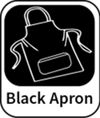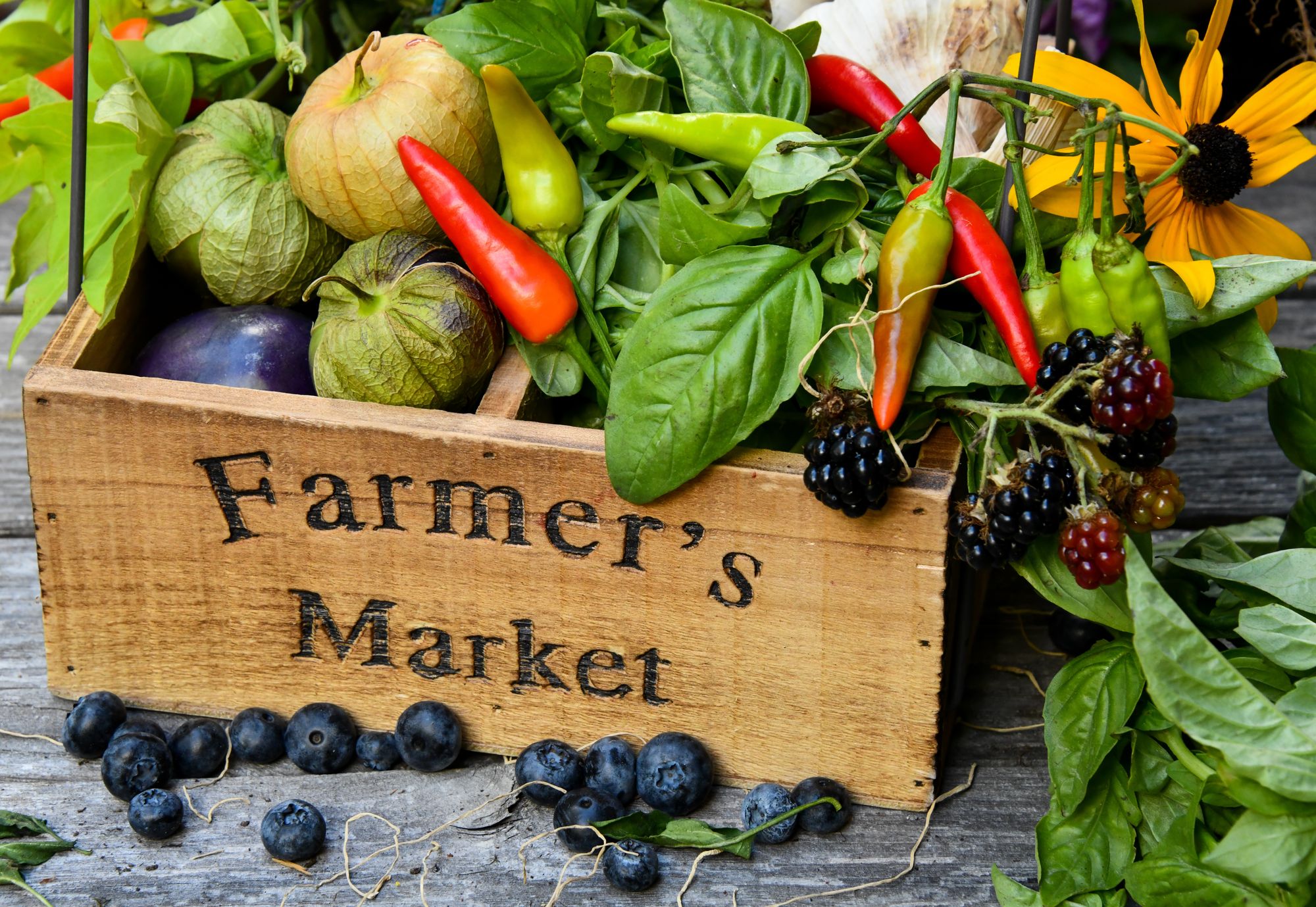Have you ever wanted something to exist so much that you find yourself fighting an uphill battle against all odds'? You know there are people who need it, that it provides an invaluable service not just to the immediate community but even to people in other cities. Something that feels like it should be doing well, but is struggling so hard, others have given up on it and suddenly you find yourself in charge of its existence… seemingly past the point of no return?
Welcome to the Kennewick Farmers Market.
Two years ago, I was trying to get my nonprofit, Black Apron, off the ground. I was in contact with the amazing Carrie Green through her work with Meals on Wheels and she sent out an email looking for people to help out volunteering with the Kennewick Farmers Market. At the time, I was unemployed and living in a sketchy apartment complex up by the cemetery so I could get downtown on my bike pretty easily — a good use of my time while I waited on all the moving parts to come together for my nonprofit, whose purpose was getting good food to those in need.
It felt like kismet, then, when I showed up for the first market of 2021 and heard that the Kennewick Market was one of only two in the area that was part of both the EBT/SNAP (Supplemental Nutrition Assistance Program) match program as well as the WIC and senior WIC programs through the Farmers Market Nutrition Program (FMNP). That’s a lot of jargon, but basically there are two great programs that help provide fresh local produce to people in need. The SNAP match program lets people with EBT take out funds (up to 40 dollars per market) from their account that are essentially then doubled with the caveat that the matched funds need to be spent on produce — fruits, vegetables, and mushrooms. This program also works for the kids’ EBT program. It really helps families get more fresh produce than basically anywhere else, including from the grocery stores, while also directly benefiting the farmers who work hard to grow, process, and haul their wares into town each week. The FMNP gives out WIC and senior WIC checks directly to individuals in need as a booklet of ‘checks’ in 4-dollar increments that are spent like cash with state-approved farmers. Jenni H. wrote a great article about the Farmers Markets of the Tri-Cities in the September issue, if you’d like to learn more.
These are amazing programs the state offers which, in my experience, very few people know about, including the people who have access to these programs. It was a no-brainer that this concept tied directly in with my personal objective to try and connect people in need with good quality food. I jumped in and was more than happy to give the SNAP match program my full attention. As the season progressed, it became clear that volunteering at the market was the right choice; I’m so glad that I did. All I did was show up at 3pm to a market 80% ready for business and give people twice as much money as they take out to buy amazing produce from amazing farmers. It was great!
It was great. But right now is when it becomes difficult to explain my experience volunteering at the market, because I had to watch it slowly sink into the abyss of nonexistence like so many other helpful programs.
First, the vendors started to disappear. By ones and twos, they’d back out the day before, or sometimes with no warning at all, and the market layout would have some holes. Then some stopped showing up altogether, and we’d be lucky to get a reason. To be fair to them, there are only so many weeks you can pack all your stuff up, drive into town, and unpack, only to sell enough to barely pay for expenses. Some weren’t even making that. With the post-COVID success of the Richland market, the legacy status of Pasco’s market, and all the new “We’re not actually Farmers Markets according to the state but we want in on this whole thing” markets popping up, the competition was high and the expectations for the number of visitors for a successful market day grew even higher.
The hardest part to explain, to both vendors and the population in general, was that the Kennewick Market was never trying to compete with the other markets. We are the local downtown market where parents and their kids come to get their week’s groceries, where seniors can ride down on their scooters to get some in-season fruits and veggies. I had families drive to downtown Kennewick from Richland because they were on EBT and literally didn’t feel welcomed at their city’s market — people who were trying to stretch a dollar to make it to the next month while still trying to eat right. Because the Kennewick market runs from 4pm–7pm on Thursdays, it allowed people to make it to a market if they had to work Friday and Saturday mornings. But because of that day and time, some other key issues popped up in the last few years that helped lead to the semi-disastrous state of the market as it now stands.
It’s no surprise that the last few years have been difficult weather-wise, from the constant smoke, to weeks of nonstop heat over a hundred degrees. Because of the time of day, Kennewick Farmers Market is more vulnerable to weather than markets that happen earlier, and because of its location in a small, uncovered parking lot there is no shade to help shelter vendors and their wares and customers as they shop. This has led to multiple straight-up cancellations of the market (on days over 105°), but has also been devastating when we do stay open on hot days. It is a huge drain on our vendors who show up and muster on through the heat for a limited audience (who may not even buy anything from their booth). This understandably leads to disappointment and vendors dropping from the market (in one instance, I had a vendor pack up and leave in the middle of the market). Less vendors means a less impressive looking market, which means less customers per week, which means more vendors dropping out… a negative feedback loop that I had to watch slowly destroy something that was not only really helping people, but that also allowed the public to meet and form connections with the people who create the food that sustains us all.
"Bowed by the weight of centuries he leans
Upon his hoe and gazes on the ground,
The emptiness of ages in his face,
And on his back the burden of the world."
—Edwin Markham
Hands down, the best perk of volunteering at a farmers market is getting to know the vendors. There are vendors who stick around week after week, with the 100+° heat bouncing off the blacktop and cooking us in our stands, winds gusting hard enough to lift canopies off the ground despite being weighed down. Even on days when things all line up perfectly, sometimes for whatever cosmic reasoning, customers don’t come down in the numbers we need. A bond forms with these people who work hard to make the soaps, jewelry, and art that make a house a home; with the people who get up every morning and feed the chickens and cattle, spend hours in the fields pulling weeds and harvesting the produce you can’t find in stores; with the people who work nonstop in the Red Mountain kitchen prepping culinary works with the dedication of true artisans. The amazing vendors do so much work to provide these amazing things to us all — a feat I think many don’t appreciate due to the prevalence of chain stores, Uber Eats, and Amazon — that have eroded the concept of the working class being able to afford to support local people who make our area special.
Farmers Markets won’t stop if the Kennewick market fails; all our vendors go to multiple markets. The distinction is what kind of markets we have and who they are meant to serve. Only the Pasco market and ours go through the extensive process to be verified through the state as an actual Farmers Market, then go through the extra steps to apply for and maintain the SNAP match program (not to mention stamping the WIC checks the farmers receive, as well as providing educational activities for kids and giving them ‘KERNEL cash’ — from the Kids Eating Right Nutrition and Exercise for Life program — to spend on produce). It is a lot of work, coordinating all the programs, counting all the currencies, trying to keep all the gears turning with so few resources to do it with.
Honestly, I get a twist in my stomach every Thursday morning. Is this the last market? How many of my vendors will cancel or drop out? Will we have enough customers that everyone gets sales? Will the weather make it miserable to even be out there? Why am I doing this? I don’t even live in Kennewick anymore; I could be at home working on my nonprofit or letting my chickens out to graze… heck, even going to the dentist would be better than this feeling….
Then the vendors start to pull in, the parking lot slowly starts to fill. The people start to show up. Enough of our amazing vendors make it down every week and customers start wandering in long before we officially open, waiting for the food to get unloaded and unboxed so they can be the first in line. My favorite families stop by to get their SNAP match (some coming in from Richland because they feel more welcomed here). We talk about what they cooked last week or their plans to can some fruit or finally make carrot top pesto. Kids play jump rope with each other, learn to hula hoop or make thank you cards to give to our farmers, and then get to buy a peach or some lion's mane mushrooms with their KERNEL dollars for their efforts. A lone cloud blocks the sun during a lull while the musician plays Taylor Swift on his acoustic guitar and vendors dance in front of their stalls with their kids. Farmers get paid, families get fed, and memories are made.
By the time you’re reading this, the season is over. The last market has passed and Historic Downtown Kennewick has already moved on past multiple other events, running around trying to prep for the Christmas event and the car show and funding for next year and the countless other things my boss has to do. Who knows what next year’s market will look like? When, where, and who will be in charge? There’s always hope — there has to be — that regardless of what happens there will still be a place for people to come get fresh local things from hardworking amazing people and that those who need it most will be welcomed and feel connected to their community. Maybe you’ll remember reading this when next year’s season starts and you’ll stop by and say hi, buy a few things, make some connections, and help keep this thing going.
Until then, good luck to all of you who are holding onto strings in your life others think best left to fray. Let me know if there’s anything I can do to help.
Local nonprofit chef. Instagram: Food4EveryoneTC


